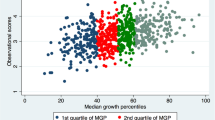Abstract
It is the U.K. Government's policy to achieve “the right number and balance of graduates in the 1990s”. According to the Government, this will require more attention being paid to “the needs of the economy” when decisions concerning the allocation of resources between subject areas are being made. In particular, the Government believes that higher education should be more vocationally-oriented and aims to influence the subject balance in this direction. The purpose of this paper is to examine the possibility of constructing a set of indicators for deciding which subjects have produced the most marketable and the most satisfied graduates. Two sets of indicators are constructed. The first is based on labour market indicators such as the earnings and unemployment rates of graduates. The second set of indicators is based upon information about the value which the graduates themselves place upon their degree qualifications. When these two sets of indicators were combined, substantial differences were found in the relative worth of graduates in different subjects (for male and female graduates separately). Graduates in some subjects achieved far higher scores than graduates in other subjects on either one or both sets of indicators.
Similar content being viewed by others
References
Department of Education and Science (1985) The Development of Higher Education into the 1990s, Cmnd. 9524 [Green Paper].
Department of Education and Science (1987) Higher Education: Meeting the Challenge, Cmnd. 114 [White Paper].
Department of Education and Science (1989) Shifting the Balance of Public Funding of Higher Education to Fees, A Consultation Paper, April 1989.
Osbourne, M.J. (1989) ‘On the Marginal Cost of a Student in the Public Sector of Higher Education in the U.K.’ Journal of Further and Higher Education, Volume 13(1), Spring, pp. 55–65.
Robbins Report (1963) Higher Education, Command 2154, HMSO, London.
Tarsh, J. (1988) ‘New Graduate Destinations and Degree Class’ Employment Gazette, July, pp. 394–413.
Taylor, J. and Johnes, J. (1989) ‘An Evaluation of Performance Indicators based upon the First Destination of University Graduates’ Studies in Higher Education14, pp. 201–217.
Williams, G. (1985) ‘Graduate Employment and Vocationalism in Higher Education’ European Journal of Education20, Nos. 2–3, pp. 181–192.
Author information
Authors and Affiliations
Additional information
The author is grateful to the ESRC for supporting the research reported in this paper, which is part of a larger project on the construction and evaluation of performance indicators in higher education.
Rights and permissions
About this article
Cite this article
Taylor, J. Determining the subject balance in higher education: how should this be done?. High Educ 19, 239–257 (1990). https://doi.org/10.1007/BF00137109
Issue Date:
DOI: https://doi.org/10.1007/BF00137109




